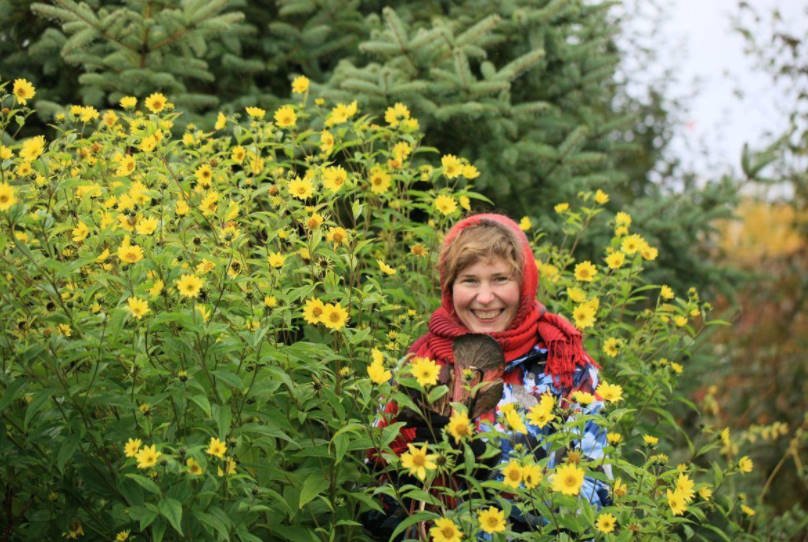
Own classification of perennials, makes you look at familiar plants in a new way. Recall that in the last article the Author conditionally divides the population of flower beds into the following categories: architectural (those that immediately catch the eye), vertical and horizontal, and even – “smoke”. Read the article and you will understand the advantages of such a view.
Architectural hybride Helianthus ‘Lemon Queen’
And actually, I love tall plants, plants with beautiful foliage, plants with some extraordinary quality that makes them stand out among the similar. In Helianthus-a color out of season, this is the most important and most valuable. Next, in descending order: high growth, the effect of walls, absence of disease, rapid growth, but the color… this color can be given half the Kingdom.
Of course, it is ideal for planting somewhere on the border of the site to blur the boundaries of space. Last summer it became an ornament of a garden when almost everything already bloomed. I like that he’s not at all lost among beautiful maples, viburnum, Euonymus , but rather seems to be their equal.
I used Helianthus in many compositions, different in mood, content, soil, lighting, tasks and ways to achieve them. But everywhere he was simply necessary, and is very difficult to find a replacement.
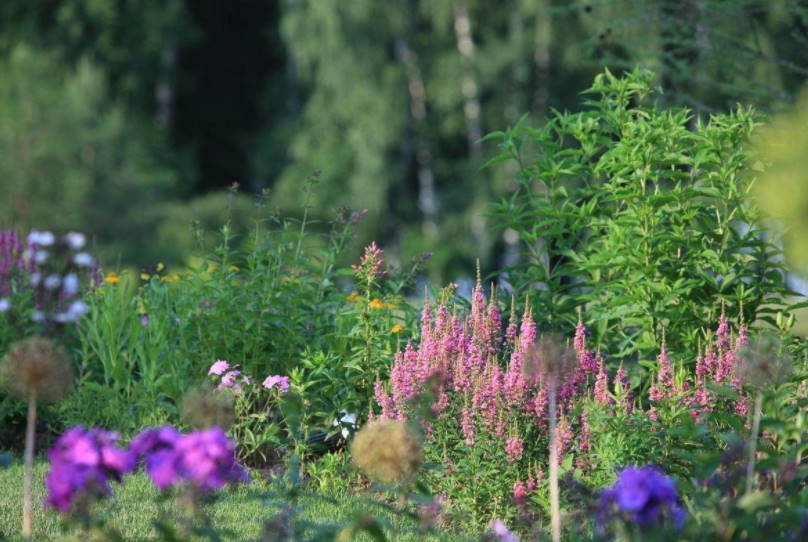
For example, in a monochrome composition in front of Helianthus I planted a Ligularia ‘the Rocket’ bright yellow and unforgettable Euphórbia yellow-green. In General, it is believed that the combination of different shades of yellow is very rarely successful. But in our case, these three plants form a self-sufficient architectural group, with the flowering of all three almost does not intersect, and all attention is given to forms.
I planted geliantus on wall background combined with Macleaya and Artemísia “tree of God”. The whole trio played the role of “wall in front of the wall” and looked great.
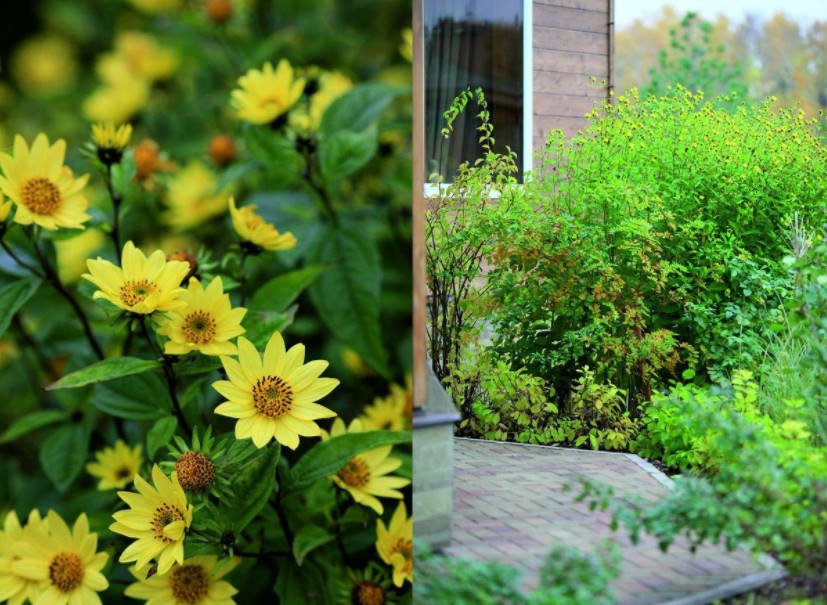
Helianthus can play the role of a sort of garden screen and at the same time support for non-structural and ever-fluctuating Delphinium.
Yeah. Indeed, an interesting plant. Can afford to grow in the front flower beds and” on the outskirts of the Empire”, both in cold and hot compositions…
Vertical: Perovskia atriplicifolia ‘Little Spire’
It is still unclear how the imagination and logic work in the design of the flower garden, how quickly it seemed the ideal idea when taken out into nature becomes absolutely uninteresting and how a new solution comes.
To change the darmera to Perovskia and make it the main thematic plant in the planting process means to rebuild the whole image of the composition and turn “fire” into “fog”. All because Perovskia was brought to the site for another flower garden, and the place did not have time to prepare. And it is constantly hurting our eyes, demonstrating their excellent quality.
It has something to boast about: vertical and smoke at the same time, compact and fragrant, easily decorating both private rosaries and urban gardens, interesting both in the fall, during flowering and after it, which is especially valuable. It has an interesting texture of stems and attracts not only butterflies, but also crowds of tourists in Villandry and Citroen.
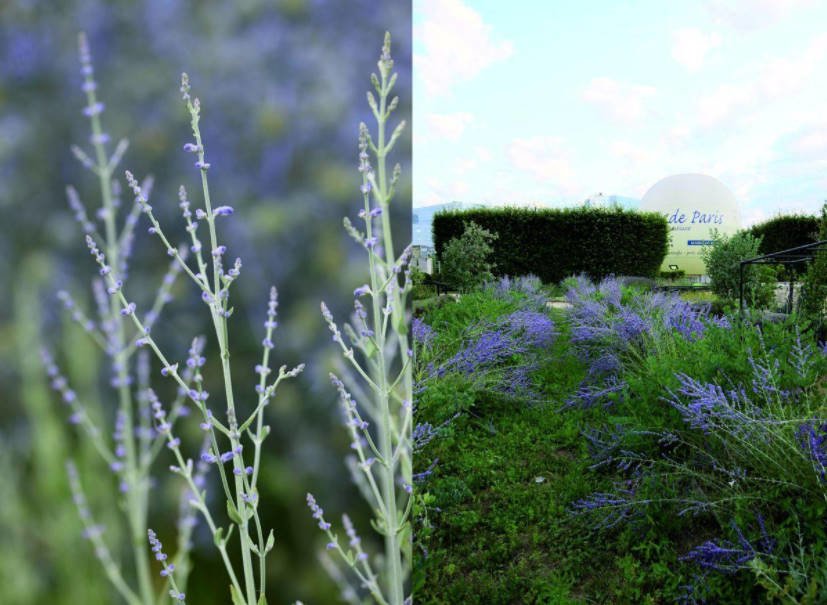
Perovskia is a favorite of Piet Oudolf and favorite of all festivals in Chaumont
Perovskia is a favorite of Piet Oudolf and favorite of all festivals in Chaumont. Enumerate its advantages for a long time.
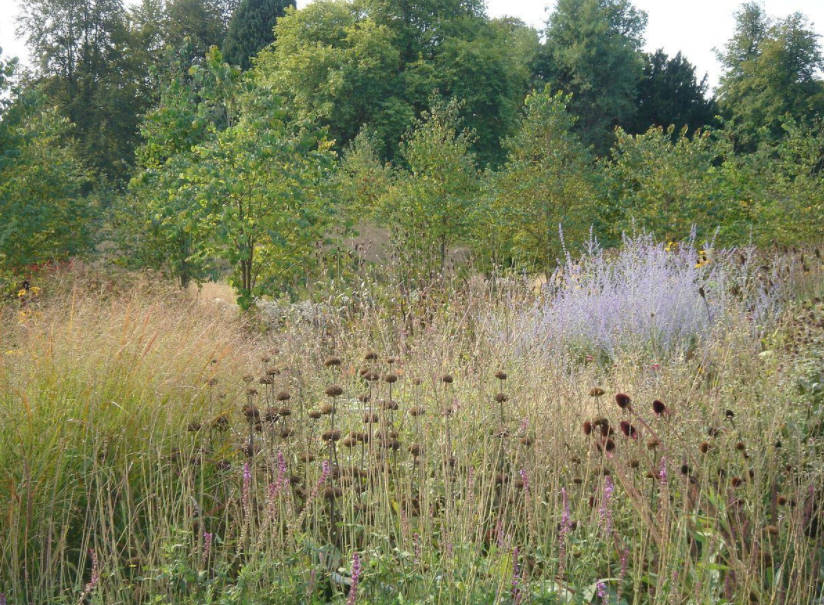
Perovskia’s possibilities are endless, as is its blue color, which takes us far beyond the horizon. Pete Oudolf, for example, included it in a memorable meadow of perennials in Scampston Walled. Need to say, that the most often Pete uses variety ‘Blue Spire’, not ‘Little Spire’. But the difference in height between the two varieties is only 20 cm, so we can safely operate as one, and another variety.
If you look, Perovskia can be used in almost all color combinations:
- Want it hot – then Perovskia, Polygonums and dahlias or Perovskia, gelenium and millet.
- In combination with egg yellow its partners can be solidaster, Rudbeckia, Coreopsis.
- It is good and purple plant type plant ‘Palace Purple’, fennel or chervil ‘Raven’s Wing’.
- No less interesting is the combination of dark Aster ‘Prince’ and bright verticals Perovskia.
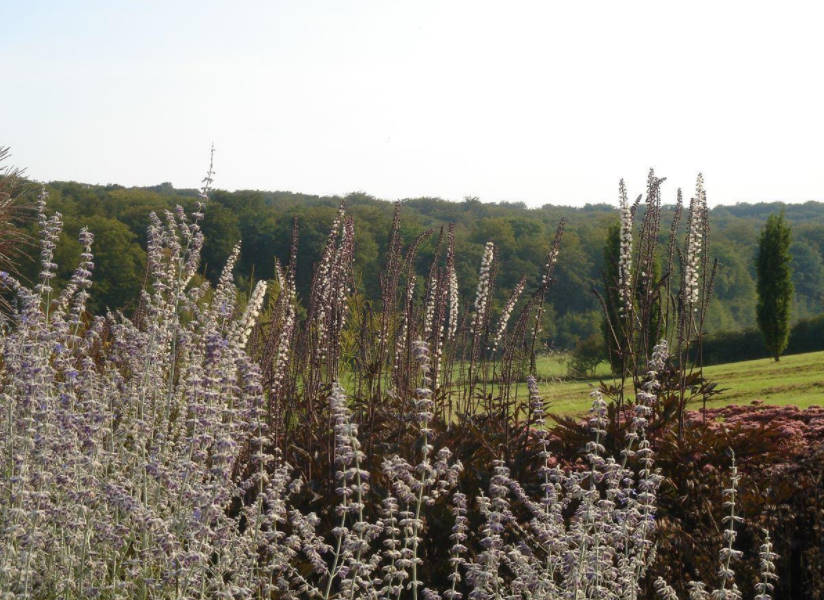
Perovskia can be used in almost all color combinations
Its combination with delicate shades of apricot, among which are leading roses and irises, will not leave you indifferent. In a twist on apricot rose Perovskia is definitely the place. In one case, it can serve as a plant-an upstart and blossom at the edge of the curb, in the other – to be planted in the vicinity of roses and serve as their background, in the third – to play along with the silver Artemísia and sheep.
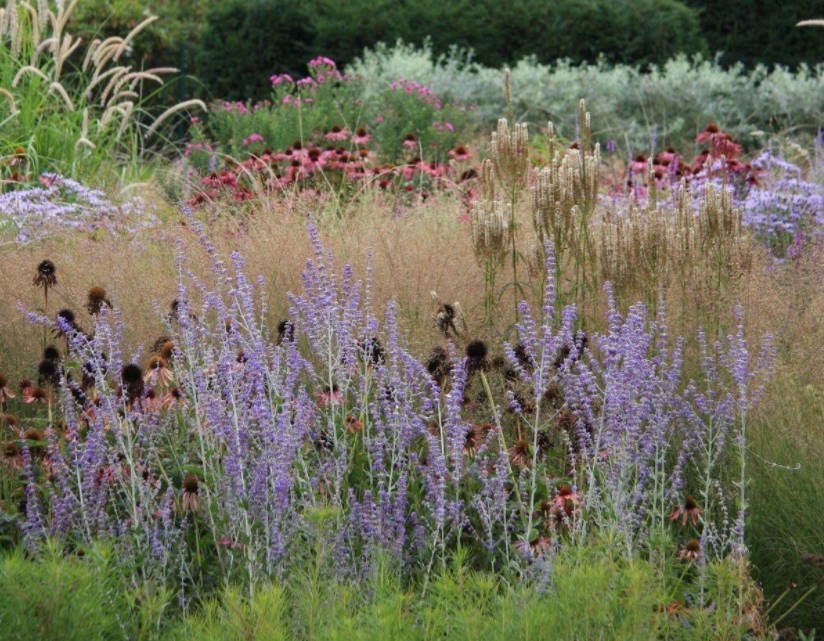
Perovskia can be a real lifesaver
It also blends perfectly with Berberis, especially when Berberis I want to put many different. In one of the collections of barberry Perovskia became a real lifesaver, combining bright autumn colors of burning bushes.
Smoke: Cenolophium denudatum
Rising star among the umbrellas: the beauty of openwork foliage and its location resembles a pagoda.
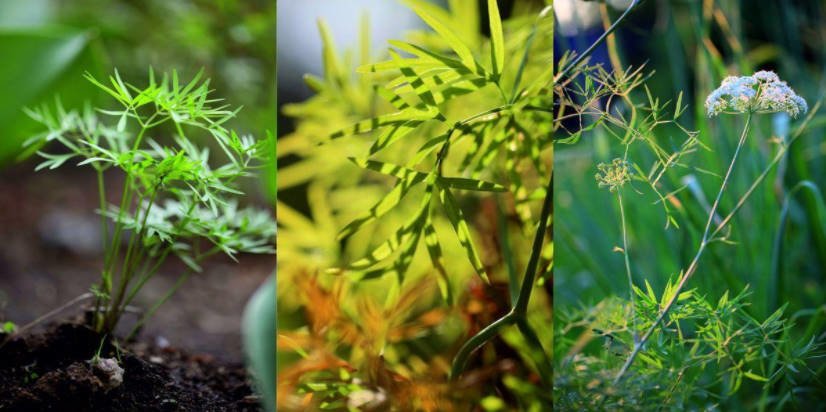
Given the cute white umbrellas, unusual autumn color and long-lasting decoration, this plant with a strange but memorable name, will soon Eclipse all. Everyone who has come from Cherbourg. So I nicknamed the umbrella, which I use in my flower beds.
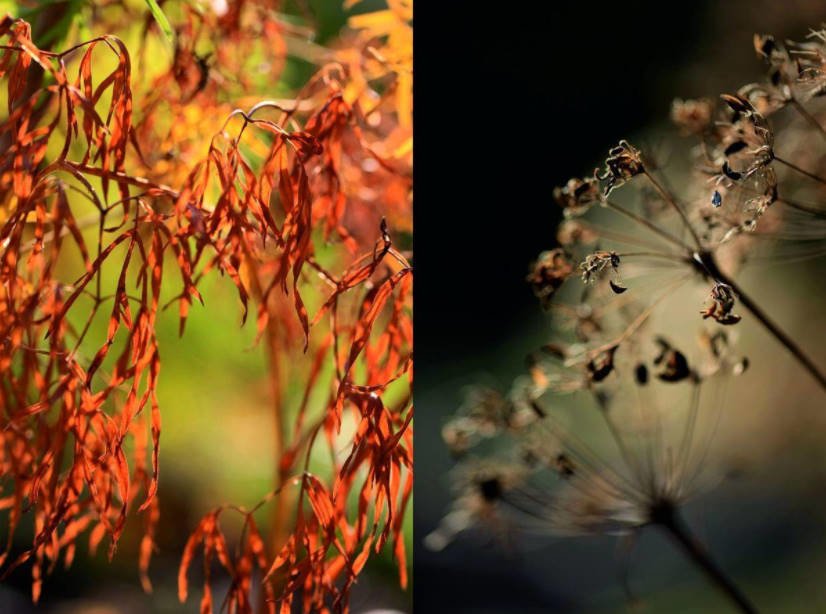
Posturepedic with a height of 120 cm, combined with roses and tulips, bows and astrantia. Good with cereals and asters.
- Cereal I tried it to combine with Calamagrostis diamond – very pretty autumn picture of astr chose their favorite Astra splayed.
- With the Polygonums planted as with amplexicaul, and completely unstructured but incredibly handsome Polygonum splayed, with the ability to grow quickly and every day to change their form from small bumps to the Bush with a diameter of about one meter. Also in this Polygonum attracts the redness of young stems, which makes it possible to plant as a Polygonum and a hawk with poppies.
- Nuanced color combinations of stems and flowers of poppy attract unusually. Subsequent to June flowering poppies long flowering hawthorn stretches until August. And then included dairy inflorescence of Polygonum is quite interesting and promising. New volume in the garden and covering up the traces of poppy at the same time.
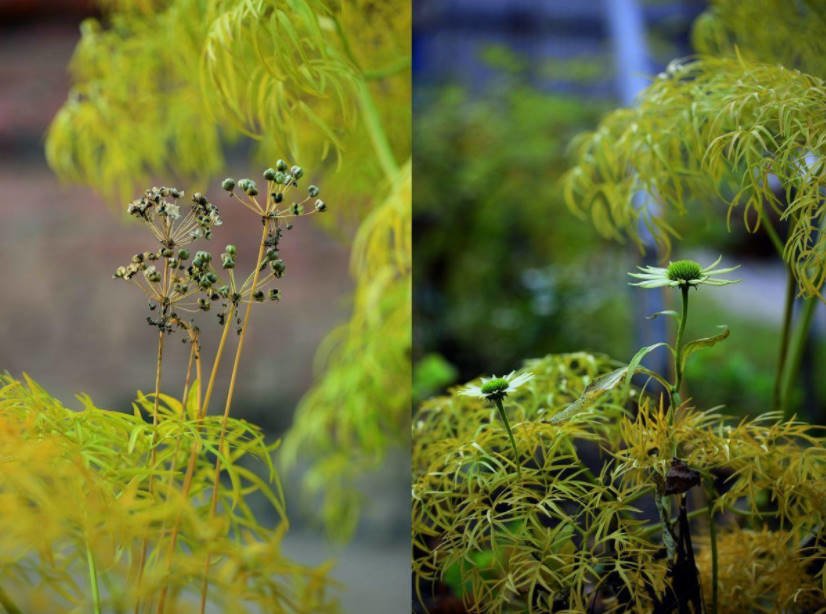
You can use Cenolophium in meadow flower beds with daisies and bells, geraniums and lupins. Despite the fact that it relates to an umbrella, the main effect of it is not in the umbrellas and in the foliage in its horizontal position.
Horizontal: Lysimachia ciliata (purpurea) ‘ Firecracker’
The main and most valuable quality of this Lysimachia ciliata (purpurea) ‘Firecracker’ – its aggressiveness or, in the language of the hero of the popular cartoon, “shagginess increased”, which manifests itself when filling the allotted space. This is one of the best groundcover plants, beginning to grow in April and then pleasing us throughout the season.

Lysimachia interesting in the first half of the summer, that the sun (as in the shade it is green), but neighbors can choose a lot depending on the picture that you want to:
- Interested in “hot” flower gardens-plant with dahlias ‘Bishop of Llandaff’ and monards, nasturtium and milk Griffith ‘Dixter’, against the background of red maple or Cotinus with poppies and sunflower, or together with the Menzi’s Sanguisorba, mix of Onion.
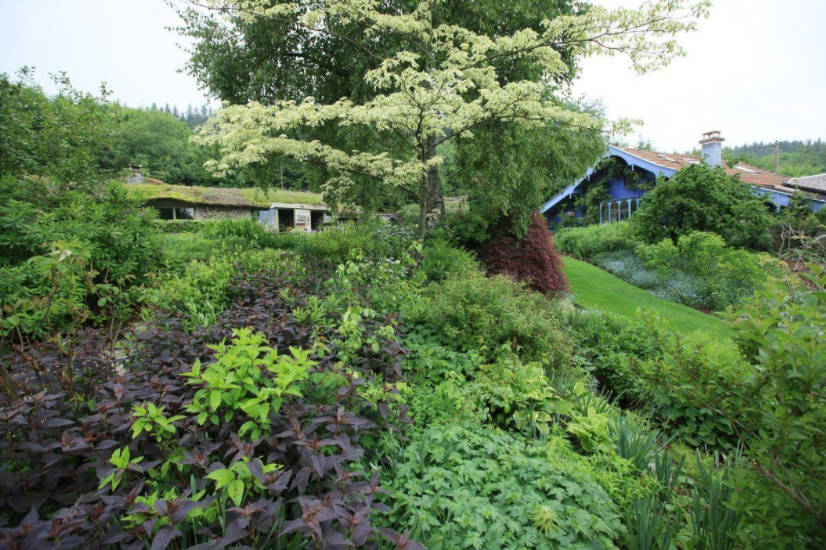
Another possible composition, it is especially good in the spring, during flowering bright tulips blue beauty-Amsonia and bright blue sage. This is so unusual and daring combination, not amenable to any rules, and therefore it looks great and alluring. I was also inspired by the combination of blooming sage meadow, painted in an amazing noble marsh color, purple balls of Christophe’s bow, gray leaves of oatmeal and geranium ‘Brookside’. It looks extraordinarily beautiful on a background of purple foliage of the Lysimachia, much better than the already hackneyed combination with yellow shrubs.
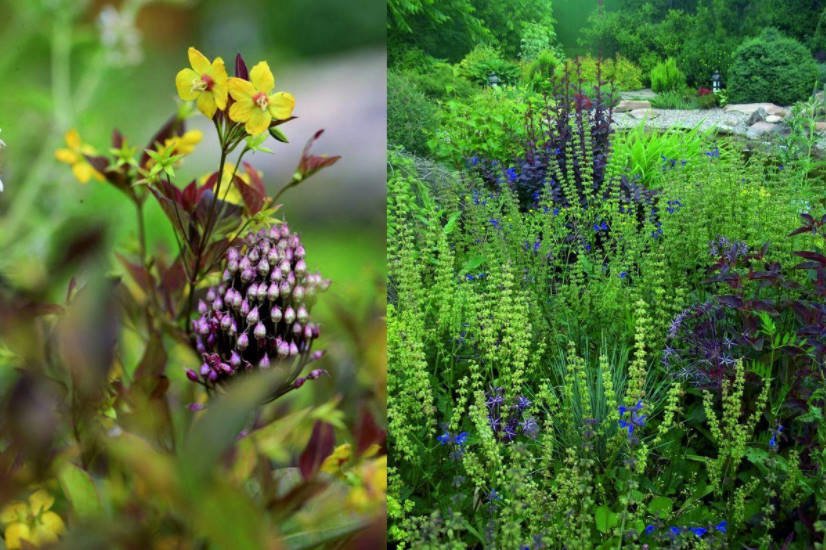
Also I really like the corner with willow trees in Appeltern by the river: first, because willow, second, because the Lysimachia. He’s planted there under the willow trees and serves as a ground cover.

In the French garden of the country Osh Lysimachiawas surrounded by balls of boxwood. I often remember the gorgeous double border in the garden Darina Allen, where Lysimachiais combined with Camassia, fennel, sedums and Thalictrum.

If you love purple color, its effect can be repeatedly strengthen by planting Lysimachiawas, for example, penstemon ‘Huskers Red’ or purple Heuchera, or, even better, with the same aggressors – the Ajuga ‘Atropurpurea’ and the plantain ‘Purpurea’. Well, if you want to be “decorous and dignified”, while the Badan ‘Purpurascens’ and Euphorbia ‘Chameleon’. Do not take your eyes because it is dark and nothing is visible.

To be continued.
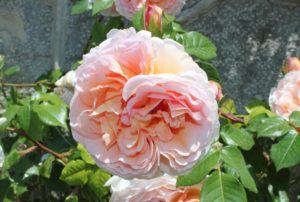

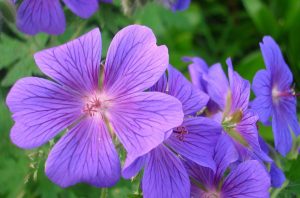
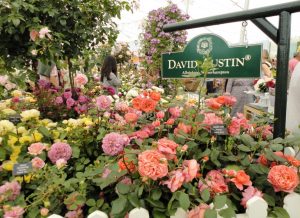
Leave a Reply